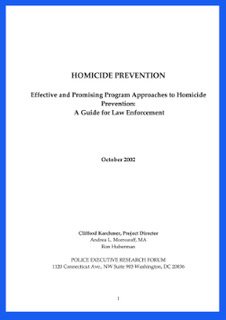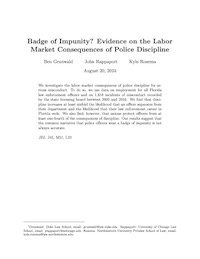By Trisha Rhodes
In 2017, the Little Rock Police Department (LRPD) was awarded the BJA Technology Innovation for Public Safety (TIPS) grant. LRPD created the Crime Guns Intelligence Unit (CGIU) in March of 2018 with the primary goal of reducing violent gun crimes in Little Rock, particularly in a historical hotspot of gun crime. Once assigned, CGIU detectives began processing backlogs in ballistic evidence. A crime analyst assigned to the unit collected data to track case information and conducted link analysis to identify the connections between incidents, evidence, and suspects. ShotSpotter gunshot detection devices were deployed in mid-December of 2018. In addition to technological advancements, CGIU formed a working group with partner agencies to collectively examine violent gun incidents and develop solutions. Partners met monthly and discussed ways of improving evidence collection and investigation of cases to increase prosecution outcomes. Meetings allowed partners to communicate more openly and frequently to share intelligence and quickly address potential obstacles toward reaching program goals. As a result of meetings, LRPD developed new policies surrounding the collection of ballistic evidence and strengthened relationships with other agencies, including the ATF, Arkansas State Crime Lab, FBI, Pulaski County Prosecutor’s Office, and U.S. Attorney’s Office. Further, the CGIU has since expanded efforts to serve as a state Crime Guns Intelligence Center and work with surrounding police agencies and crime analysts. To assess CGIU's efforts to meet program goals, the City of Little Rock and LRPD hired a research partner from U.A. Little Rock to evaluate the CGIU program. The evaluation team collected data on violent gun crimes, processing of ballistic evidence, arrest clearance rates, and the prosecution of gun crime cases at the state and federal levels. Below is a summary of key findings from the evaluation of the LRPD CGIU program, which are covered in more detail in the report. Key Findings Violent Gun Crime Trends • Between 2017-2020, the City of Little Rock experienced a monthly average of 3 gun-involved homicides, 11 non-fatal shootings, 14 terroristic acts, 19 robberies, and 186 shots fired. o Gunshot alerts accounted for 80% of incidents. o Excluding gunshots, the following percentages1 show the breakdown of each crime type: ▪ 7% homicides ▪ 24% non-fatal shootings ▪ 29% terroristic acts ▪ 40% robberies. Within the ShotSpotter Zone2, there was an average of about 1 (0.65) gun-involved homicide, 3 non-fatal shootings, 3 terroristic acts, 2 robberies, and 46 shots fired per month between 2017-2020. o Gunshot alerts accounted for 85% of incidents. o Excluding gunshots, below are the percentages of each crime type: ▪ 8% homicides ▪ 34% non-fatal shootings ▪ 30% terroristic acts ▪ 28% robberies • In the ShotSpotter Zone, non-fatal shootings and terroristic acts accounted for more incidents. Fewer incidents were robberies compared to the city as a whole. • Year-to-date comparisons of citywide violent gun crime trends revealed differences by crime type. o The subtotal of crime incidents (excluding shots fired) decreased in 2018 from 686 to 466 and remained at 491 in 2019. However, crime generally increased late in 2019 and 2020 to 654 incidents with sharp increases in non-fatal shootings and terroristic acts. o Non-fatal shootings decreased from 141 to 103 in 2018 and stayed stable in 2019. They increased to 188 in 2020. o Gun-involved terroristic acts decreased from 180 to 135 in 2018 and held there until rising to 216 in 2020. o Gun-involved homicides remained relatively stable (higher in 2020 compared to 2018 and 2019, though about the same as in 2017). o Gun-involved robberies dropped from 320 in 2017 to 195 in 2018 and remained there through 2020. • ShotSpotter Zone year-to-date comparisons showed some similarities in trends of non-fatal shootings, terroristic acts, and total crimes; however, gun-involved homicide and robbery trends were different compared to the city. o The subtotal of incidents (excluding shots fired) decreased from 109 to 93 between 2017-2018. They decreased further to 81 in 2019. However, violent gun incidents increased to 116 in 2020, which was somewhat higher than 2017 levels. o Non-fatal shootings decreased from 37 to 29 in 2018 and held there in 2019. However, they rose to 38 in 2020 o Gun-involved terrorist acts decreased from 39 to 20 in 2018, increased slightly to 25 in 2019, and increased to 36 in 2020. o Gun-involved homicides increased from 6 to 11 in 2018, stayed about the same in 2019, and decreased to 4 in 2020. o Gun-involved robberies increased from 27 to 33 in 2018, dropped to 15 in 2019, and increased to 38 in 2020. • In addition to year-to-date comparisons, statistical analyses tested the relationships between the timing of CGIU program components and changes in gun violence trends. The evaluation team examined the moment in time when CGIU formed (March 2018) and the moment when ShotSpotter was fully deployed (January 2019). There were differences by crime type. o Across the city and within the ShotSpotter Zone, there were statistically significant reductions in violent gun crimes (homicides, non-fatal shootings, terroristic acts, and robberies) associated with the full deployment of ShotSpotter in January 2019. While no significant changes in crime were tied to the exact date CGIU was established, violent gun crimes did trend lower in 2018 and 2019 as noted above. It is possible that program effects were more gradual, rather than immediate and that other factors aside from evidence collection/processing and investigation influenced crime trends. ▪ There was a reduction of 18 incidents per month in the city and 1 incident per month in the ShotSpotter Zone immediately after ShotSpotter was implemented. o Analyses of gun-involved homicides did not provide evidence of an effect of the CGIU or ShotSpotter on homicides. The sample size of homicides was likely too small to identify a significant effect. It is also likely that other factors (both internal and external to LRPD) affected homicide trends. o Data indicated a likely short-term decrease in non-fatal shootings citywide immediately following the initiation of the CGIU but not at later time points. This pattern did not appear evident within the ShotSpotter Zone. o When looking at gun-involved terroristic acts alone, there were relatively slight changes in crime rates both citywide and in the ShotSpotter Zone that were not directly associated with the CGIU program. o Gun-involved robberies decreased following the use of ShotSpotter; however, this trend did not appear in the ShotSpotter Zone. o Gunshot reports declined before the formation of the CGIU and remained relatively stable until 2020. There was no indication that gunshots increased across the city broadly, though there was an expected uptick in gunshots in the ShotSpotter Zone in 2019. Most likely, the ShotSpotter devices were better able to detect gunshots (as opposed to relying on citizens to report them). (continued)
Little Rock, AAR: University of Arkansas at Little Rock, Justice Research & Policy Center, 2021. 102p.





















